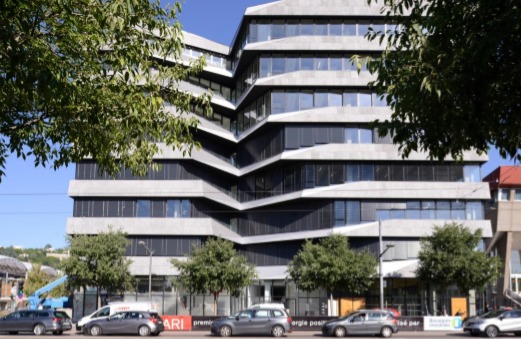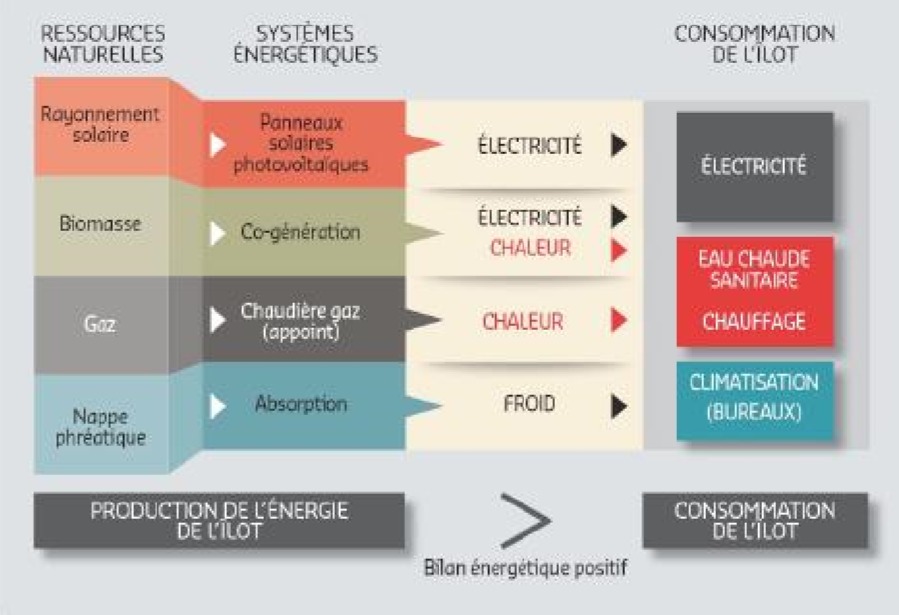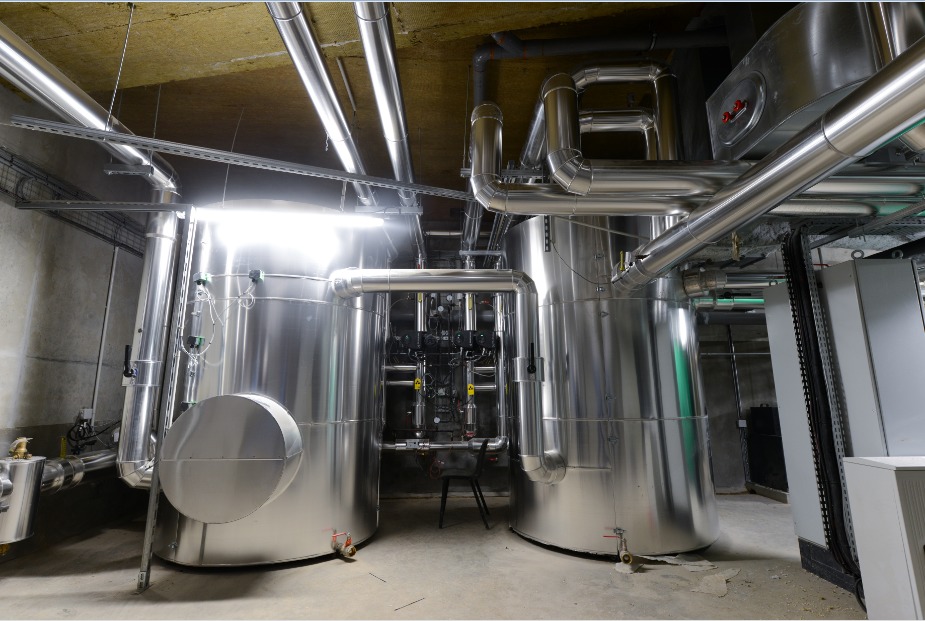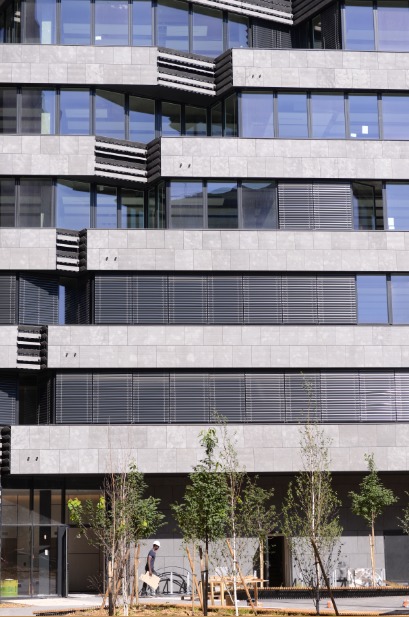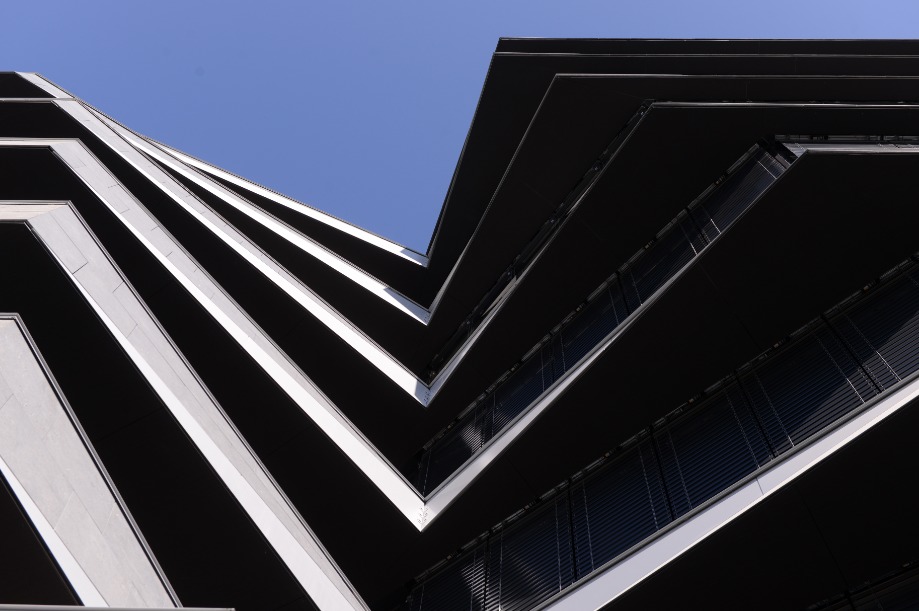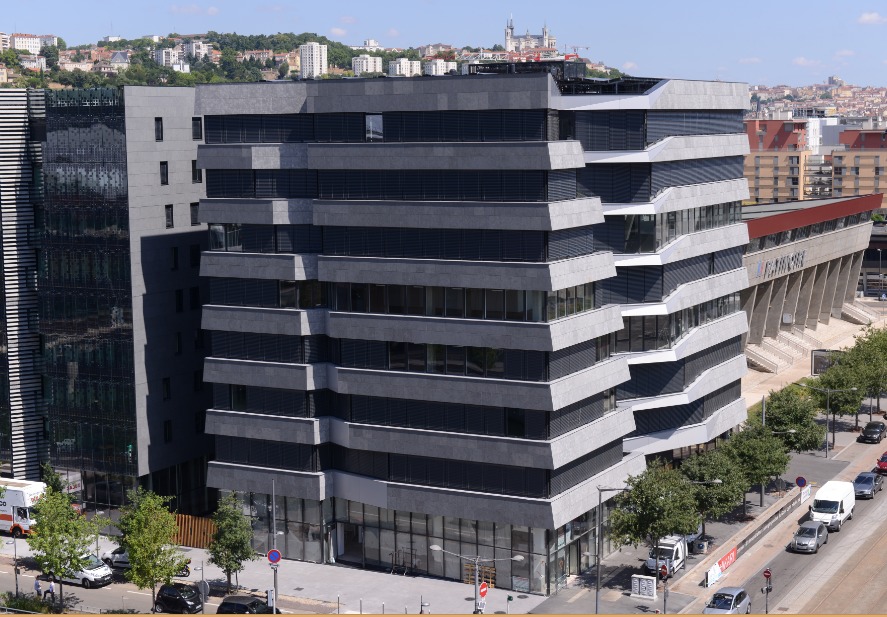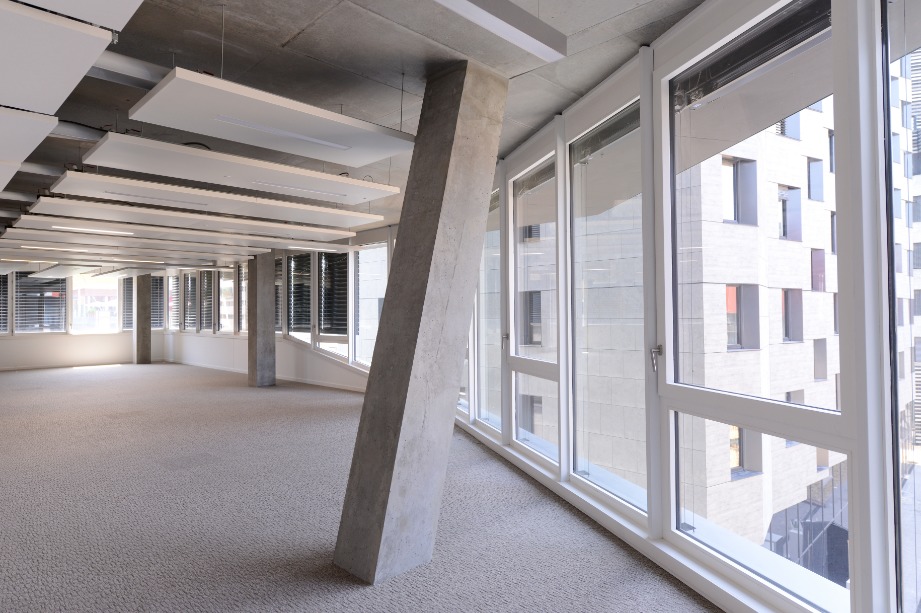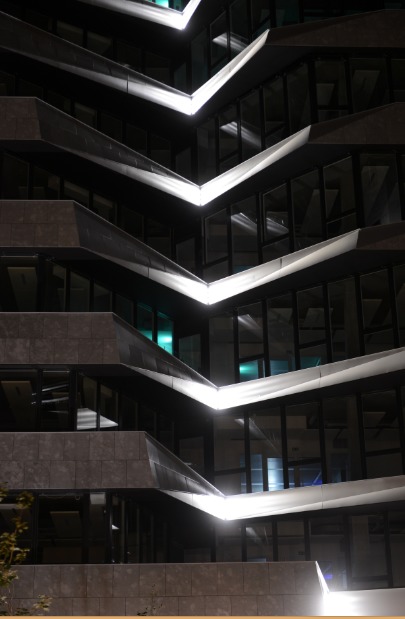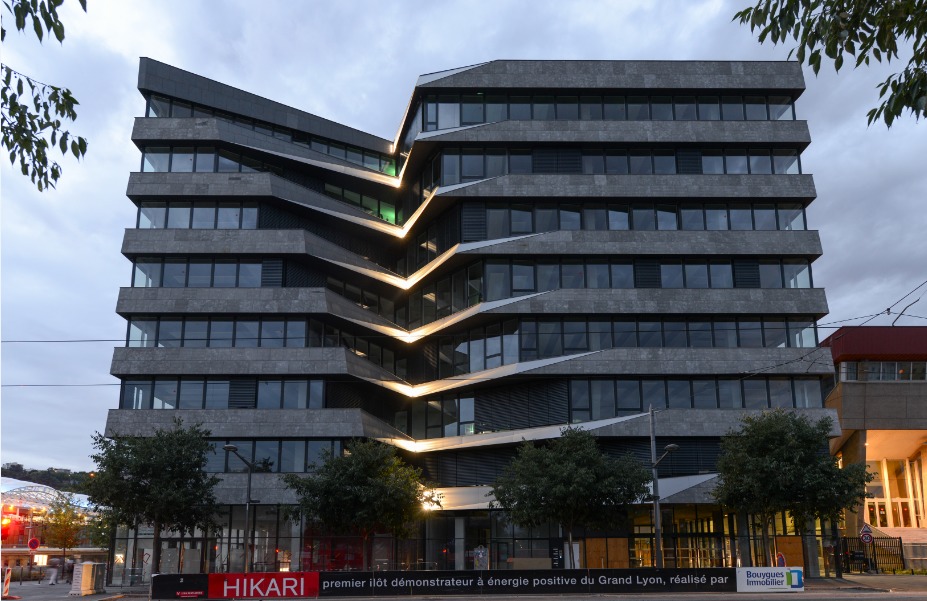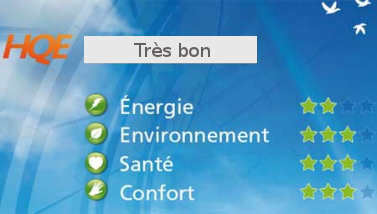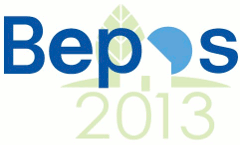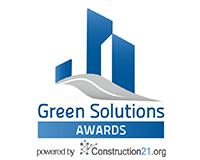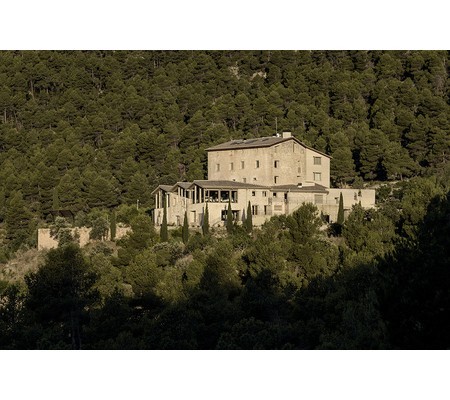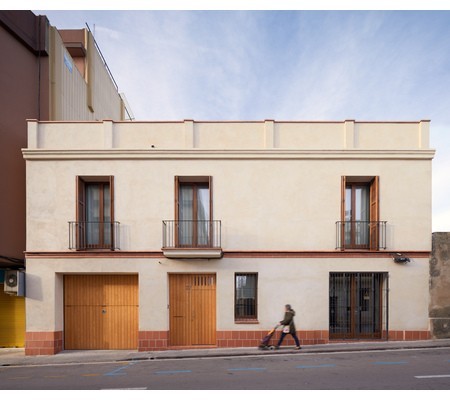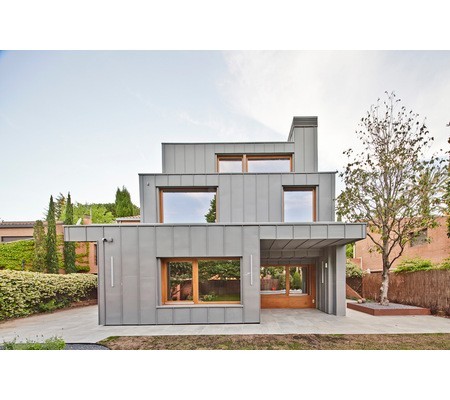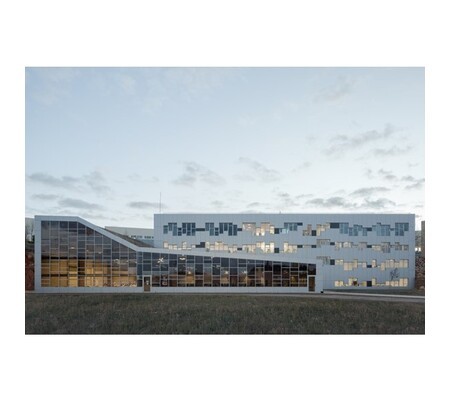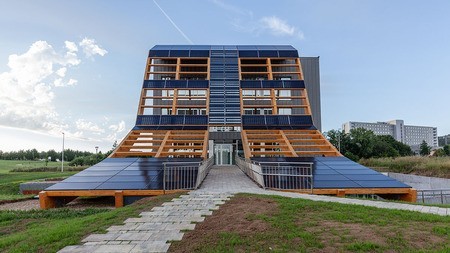Higashi: brand image and working comfort
New Construction
- Building Type : Office building < 28m
- Construction Year : 2013
- Delivery year : 2015
- Address 1 - street : 69002 LYON, France
- Climate zone : [Cfb] Marine Mild Winter, warm summer, no dry season.
- Net Floor Area : 5 263 m2
- Number of Work station : 550 Work station
Certifications :
-
Primary energy need
14 kWhep/m2.an
(Calculation method : )
Higashi is one of the 3 buildings that make up the Hikari block in the Confluence district of Lyon. Its excellent visibility at the corner of the Charlemagne course, its clear views and its quality service (Tramway, on foot, TGV station, metro) make it an exceptional tertiary site, including the headquarters of Deloitte.
-> Find the case studies of the 2 other buildings (Minami & Nishi) in our database "Buildings".
-> Find the case study of the entire Hikari project in our "Neighborhoods" database.
Sustainable development approach of the project owner
The project is fully in line with Lyon Confluence's sustainable development policy, in line with the 5 axes of Agenda 21 in Lyon and meets the very high energy performance level set by the specifications: it must be BEPOS all-purpose considered. Designing a positive energy building in a densely populated urban area, on the block scale and not in the neighborhood, is a challenge that is essentially addressed by: • an architecture favoring the implementation of passive devices • maximum use of renewable energies present in situ • the judicious integration of façade surfaces with photovoltaic panels • storage and energy transfer favored by the diversity of the program. However, limiting the reasoning to a "positive energy" criterion can be reductive if the design does not fit into a more global logic, taking into account criteria such as carbon balance, gray energy or notions of use And maintenance and operation.Architectural description
A BIOCLIMATIC APPROACH The development of HIKARI Lyon Confluence is the result of the collaboration between a multidisciplinary and Franco-Japanese design team led by architect KENGO KUMA and a leading and innovative promoter Bouygues Immobilier / SLC bringing its vision of the market. The envelope of the buildings of HIKARI Lyon Confluence was the subject of a bioclimatic approach through which architects, thermicists, energy engineers, lighting engineers and environmentalists tried to passively treat most of the comfort and Reduction in energy requirements. The "user comfort" of HIKARI Lyon Confluence, a skilful balance between the many parameters that contribute to the quality of the spaces (orientation, light, atmosphere, use ...), has been the permanent focus of the " Project team in order to make the mix of the program attractive and its positioning relevant to the market. ATTACHMENT TO THE CHOICE OF MATERIALS IN A "C TO C" LOGIC The development of a project with a demonstration objective implies a definition of the choice of materials, systems and equipment going down to the smallest details. On HIKARI Lyon Confluence, it was in a "Cradle to Cradle" logic that these choices were made, in order to minimize the carbon footprint of the operation and allow recycling as long as possible of the materials used.If you had to do it again?
The demonstration and monitoring phase, which will follow the delivery of the building, will cover and analyze all available parameters in order to adjust the technical factors of the island and its equipment to make it actor, as a living being, its behavior And its energy strategies, in the service of control and the economy of consumption.
See more details about this project
https://www.construction21.org/france/case-studies/fr/minami-32-logements-contemporains-faconnes-pour-la-vie-des-familles.htmlhttps://www.construction21.org/france/case-studies/fr/nishi-des-villas-suspendues-sur-un-immeuble-de-bureaux.html
https://www.construction21.org/france/city/fr/hikari-premier-ilot-urbain-a-energie-positive.html
Stakeholders
Contractor
Bouygues Immobilier/SLC Pitance
[email protected] - 04 72 68 28 33
http://www.bouygues-immobilier.comBouygues Immobilier is committed to continuously improving the technical and architectural quality of its buildings and satisfying its customers. It is the first developer to be both ISO 9001 certified in France.
Designer
Kengo Kuma & associates
16 rue Martel - 75010 Paris (0144889490)
http://kkaa.co.jp/Architect and engineer, Kengo Kuma is a graduate of the University of Tokyo. After a degree at Columbia University, he founded his architecture firm, Kengo Kuma & Associates in 1990.
Assistance to the Contracting Authority
Manaslu Ing
http://manaslu-ing.com/MANASLU Ing. Is an engineering and consulting company with a strong technical expertise in the fields of building energy and based on an original methodology developed by the CEA INES.
Others
NEDO (New Energy and Industrial Technonology DevelopmentOrganization)
NEDO is a Japanese public agency, equivalent to Ademe in France, responsible for supporting innovation and R & D in new forms of energy and environmental and industrial technologies.
Manufacturer
Toshiba
http://www.toshiba.fr/Toshiba was selected by NEDO as an industrial partner for the coordination of the various projects constituting the demonstrator Lyon Smart Community
Energy consumption
- 14,00 kWhep/m2.an
- 28,00 kWhep/m2.an
Envelope performance
More information
HIKARI is designed to consume approximately 1400 MWh and produce about 0.2% more.
Systems
- Combined Heat and Power
- Solar thermal
- Solar Thermal
- Gas absorption chiller
- Canadian well
- Canadian well
- Solar photovoltaic
- Heat pump (geothermal)
- Biomass boiler
Smart Building
Urban environment
- 15 000,00 m2
Product
BEMS (Building Energy Management System)
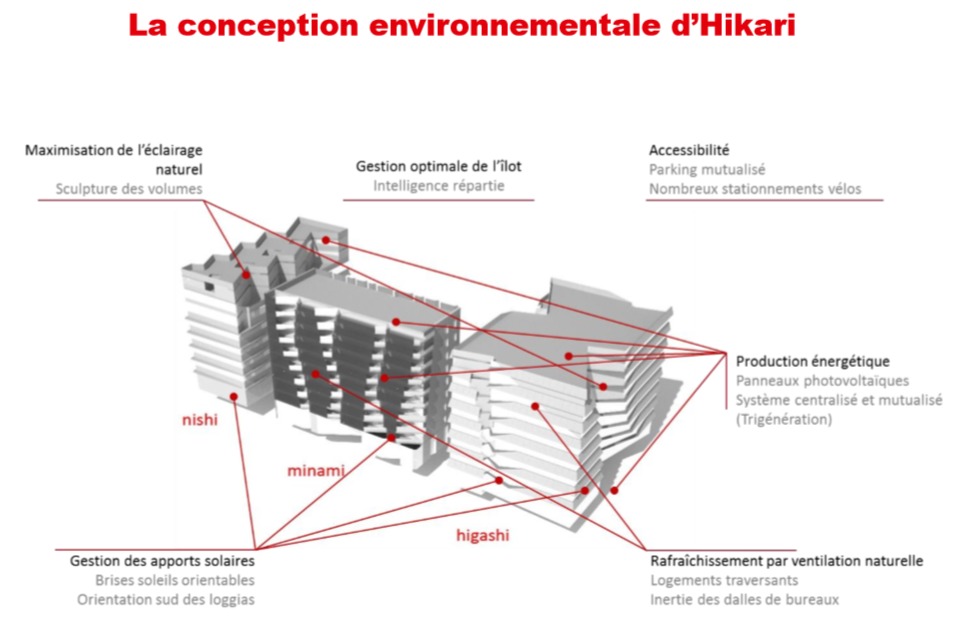
Toshiba
Jessica Boillot ([email protected])
http://www.toshiba.fr/Table 'c21_spain.innov_category' doesn't exist SELECT one.innov_category AS current,two.innov_category AS parentFROM innov_category AS oneINNER JOIN innov_category AS two ON one.parent_id = two.idWHERE one.state=1AND one.id = '3'
The BEMS (Building Energy Management System) is the centralized management of the building's parameters, which allows to regulate the production of hot or cold, as necessary, in a synergetic way with the optimized use of point energy overproductions (Cogeneration, energy storage, energy recovery, etc.).
This BEMS, which favors the use of biomass (rapeseed oil) and therefore the economy of primary energy consumption, restores a statistical profile of the whole island over the year synthesizing production and consumption.
The demonstration and monitoring phase which will follow the delivery of the building will cover and analyze all available parameters in order to adjust the technical factors of the island and its equipment to make it actor of its behavior and its energy strategies, And this in the service of the control of energy and the economy of consumption.
BEMS (Building Energy Management System)
The BEMS (Building Energy Management System) is the centralized management of the building's parameters, which allows to regulate the production of hot or cold, as necessary, in a synergetic way with the optimized use of point energy overproductions (Cogeneration, energy storage, energy recovery, etc.).
This BEMS, which favors the use of biomass (rapeseed oil) and therefore the economy of primary energy consumption, restores a statistical profile of the whole island over the year synthesizing production and consumption.
The demonstration and monitoring phase which will follow the delivery of the building will cover and analyze all available parameters in order to adjust the technical factors of the island and its equipment to make it actor of its behavior and its energy strategies, And this in the service of the control of energy and the economy of consumption.
Water management
Comfort
GHG emissions
- 1,80 KgCO2/m2/an
- 1,80 KgCO2 /m2




